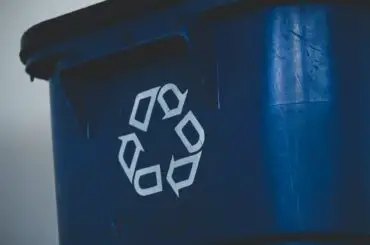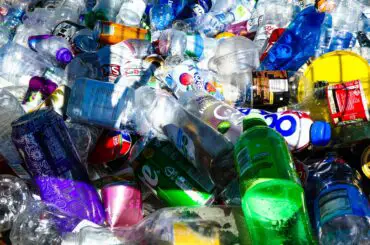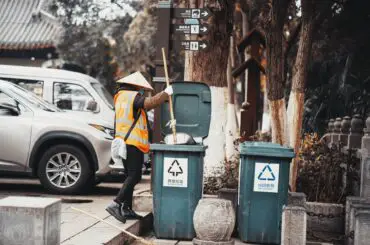Recycling plays a crucial role in waste management and environmental conservation. In a world grappling with increasing waste production and dwindling natural resources, recycling offers a sustainable solution to reduce our ecological footprint and preserve the planet for future generations. By diverting materials from landfills and reusing them in the manufacturing process, recycling not only minimizes the strain on our environment but also promotes resource conservation. Let’s delve into the significance of recycling and explore the positive impact it has on waste management and environmental sustainability.
Contents
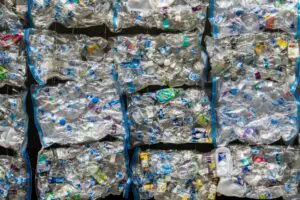 Paper Recycling
Paper Recycling
Paper recycling is a vital component of sustainable waste management practices. It involves collecting used paper materials and processing them to create new paper products. This process not only reduces the demand for virgin materials but also saves energy and water and reduces greenhouse gas emissions compared to producing paper from raw materials.
The benefits of paper recycling are manifold. First and foremost, it conserves valuable natural resources. By recycling paper, we can reduce the need for cutting down trees, thereby preserving forests and maintaining biodiversity. Additionally, recycling paper saves energy during the production process. It requires less energy to produce paper from recycled fibers compared to the energy-intensive process of manufacturing paper from virgin materials.
When it comes to paper recycling, a wide range of common paper products can be recycled. Newspapers, magazines, office paper, cardboard, cereal boxes, paper bags, and even old books can find new life through recycling. These items, when collected and processed properly, can be transformed into new paper products, including newsprint, tissue paper, cardboard packaging, and more.
However, it is important to note that not all paper is suitable for recycling. Heavily soiled paper, such as paper contaminated with food waste or grease, may not be accepted for recycling as it can hinder the recycling process. Similarly, paper products treated with wax coatings or certain types of adhesives may also pose challenges in the recycling process.
Plastic Recycling
Plastic recycling holds immense significance in the battle against plastic waste and its detrimental effects on the environment. Plastics are notorious for their long lifespan and slow decomposition, leading to a buildup of plastic waste in landfills and oceans. Recycling plastic helps mitigate these environmental challenges by diverting plastic from disposal and transforming it into new products.
One of the primary benefits of plastic recycling is the reduction of plastic waste that ends up in landfills or as litter. By recycling plastic, we can minimize the amount of plastic that is incinerated or left to degrade for centuries in the environment. This, in turn, helps to conserve natural resources and decrease the energy consumption and greenhouse gas emissions associated with plastic production.
Plastic recycling is made possible through the identification of different plastic types using recycling symbols, usually represented by numbers enclosed in a triangle of arrows. These symbols provide valuable information about the type of plastic used in an item, aiding in proper sorting and recycling. While recycling capabilities may vary by location, here are some examples of commonly recyclable plastic items and their corresponding recycling symbols:
- Polyethylene Terephthalate (PET) – Symbol #1: This category includes beverage bottles, food containers, and certain food packaging. These items can be recycled into new bottles, polyester fiber for clothing, and carpet fibers.
- High-Density Polyethylene (HDPE) – Symbol #2: HDPE is found in milk jugs, detergent bottles, and many other rigid plastic containers. Recycled HDPE is used to create new bottles, plastic lumber, and various household items.
- Polyvinyl Chloride (PVC) – Symbol #3: PVC is commonly used in pipes, vinyl siding, and certain packaging. It is challenging to recycle, and not all recycling facilities accept PVC due to its complex composition.
- Low-Density Polyethylene (LDPE) – Symbol #4: LDPE encompasses plastic bags, shrink wrap, and some packaging materials. It can be recycled into new plastic bags, plastic lumber, and irrigation pipes.
- Polypropylene (PP) – Symbol #5: PP is found in yogurt containers, bottle caps, and some food packaging. Recycled PP can be used to create new containers, automotive parts, and textiles.
- Polystyrene (PS) – Symbol #6: PS includes foam cups, food trays, and certain packaging materials. While some recycling programs accept PS, it can be challenging to recycle due to its low market demand.
- Other Plastics – Symbol #7: This category encompasses various plastic resins and blends that do not fit into the previous categories. It includes items such as three- and five-gallon water bottles and some food containers. However, not all plastics labeled with a #7 symbol are recyclable, so it’s important to check local recycling guidelines.
It is important to note that recycling capabilities for different plastic types may vary based on your location and the recycling facilities available. It is recommended to check with your local recycling program or waste management services to determine which plastic types are accepted for recycling in your area. By understanding the significance of plastic recycling and correctly identifying recyclable plastic items, we can actively contribute to reducing plastic waste and fostering a more sustainable future.
 Glass and Metal Recycling
Glass and Metal Recycling
Glass Recycling: Glass recycling is a crucial aspect of waste management that offers numerous environmental benefits. Glass is a highly recyclable material that can be processed and used to create new glass products. By recycling glass, we can conserve energy, reduce greenhouse gas emissions, and lessen the demand for raw materials.
When it comes to glass recycling, it is important to understand the accepted glass types. Clear, brown, and green glass bottles and jars are commonly accepted for recycling. These containers are collected, sorted, and crushed into a cullet, which is the broken glass used in the recycling process. The cullet is then melted down and molded into new glass products, such as new bottles, jars, and fiberglass.
It is worth mentioning that certain glass items, such as ceramics, Pyrex, window glass, and mirrors, are generally not recyclable. These items have different compositions and melting points that can contaminate the glass recycling process. Therefore, it is important to separate these materials from the glass recycling stream.
Metal Recycling: Metal recycling is an essential practice that offers significant benefits for both the environment and the economy. Recycling metals conserves natural resources, reduces energy consumption, and helps prevent the extraction and processing of new raw materials.
One of the key benefits of metal recycling is its energy-saving potential. Recycling metals requires considerably less energy compared to the production of metals from virgin materials. For example, recycling aluminum can save up to 95% of the energy needed to produce aluminum from bauxite ore.
Numerous metal items can be recycled, including aluminum cans, steel cans, tin cans, empty aerosol cans, aluminum foil, and various metal packaging materials. These items are collected, sorted, and processed to be transformed into new metal products. Additionally, larger metal items such as empty food cans, utensils, and small appliances can also be recycled.
It is important to note that before recycling metal items, it is advisable to remove any food residue or contaminants. This helps maintain the quality of the recycled metal and ensures a smooth recycling process.
Electronic Waste Recycling
The recycling of electronic waste, commonly referred to as e-waste, is of utmost importance in today’s digital age. E-waste comprises discarded electronic devices such as computers, laptops, cell phones, televisions, and various household appliances. Recycling e-waste is essential due to the harmful environmental and health impacts associated with improper disposal.
One of the key reasons for recycling e-waste is the presence of hazardous materials in electronic devices. Many electronic products contain toxic substances like lead, mercury, cadmium, and brominated flame retardants. When e-waste is improperly disposed of in landfills or incinerated, these hazardous materials can leach into the soil, water, and air, posing significant risks to human health and the environment.
By recycling e-waste, we can prevent these hazardous materials from polluting the environment. Instead of ending up in landfills, e-waste undergoes a specialized recycling process that safely extracts valuable materials and disposes of harmful substances responsibly.
Numerous electronic devices can be recycled, including but not limited to:
- Computers and Laptops: Desktop computers, laptops, servers, and their components.
- Mobile Devices: Cell phones, smartphones, tablets, and their accessories.
- Televisions and Monitors: Cathode ray tube (CRT) TVs and monitors, LCD and LED TVs, and computer monitors.
- Home Appliances: Refrigerators, washing machines, dryers, air conditioners, and microwaves.
- Audio-Visual Equipment: DVD players, stereo systems, speakers, and cameras.
- Small Electronics: Printers, scanners, keyboards, mice, gaming consoles, and electronic toys.
Recycling electronic devices involves various processes, including dismantling, sorting, and recovering valuable materials like metals, plastics, and precious metals such as gold and silver. Some components can be refurbished or repurposed, reducing the need for new products and conserving resources.
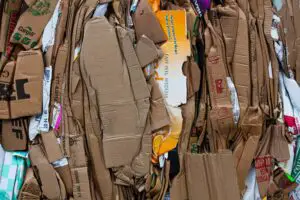 So, What can be recycled?
So, What can be recycled?
In conclusion, recycling plays a pivotal role in waste management and environmental sustainability. Through recycling, we can conserve resources, reduce energy consumption, minimize pollution, and mitigate the harmful impacts of improper waste disposal. Let’s recap the key points discussed and reiterate the importance of recycling.
Firstly, we explored the significance of recycling paper, plastic, glass, metal, and electronic waste. Each of these materials has its unique benefits when recycled, ranging from resource conservation to energy savings and pollution reduction. By participating in recycling programs and correctly identifying recyclable items, we can make a tangible difference in waste reduction.
Furthermore, we highlighted examples of recyclable items within each category, such as paper products, plastic bottles, glass containers, metal cans, and electronic devices. It is important to remember that recycling is a collective effort, and every individual’s participation counts.
We encourage readers to actively participate in recycling efforts. Start by familiarizing yourself with local recycling guidelines and programs. Educate yourself about the types of materials that can be recycled and the proper sorting procedures. Make recycling a part of your daily routine by separating recyclables from general waste and ensuring they reach the appropriate recycling facilities.
By embracing recycling, we can contribute to a more sustainable future. Each recycled item has the potential to be transformed into new products, reducing the strain on natural resources and minimizing waste sent to landfills. Moreover, recycling reduces the energy consumption and greenhouse gas emissions associated with the production of new materials.
Remember, recycling is not just a responsibility; it is an opportunity to make a positive impact on the environment. So let’s join hands and actively engage in recycling efforts, inspiring others to follow suit. Together, we can create a cleaner, greener, and more sustainable world for generations to come.
Want to know what are the advantages and disadvantages of recycling? Read it here.


